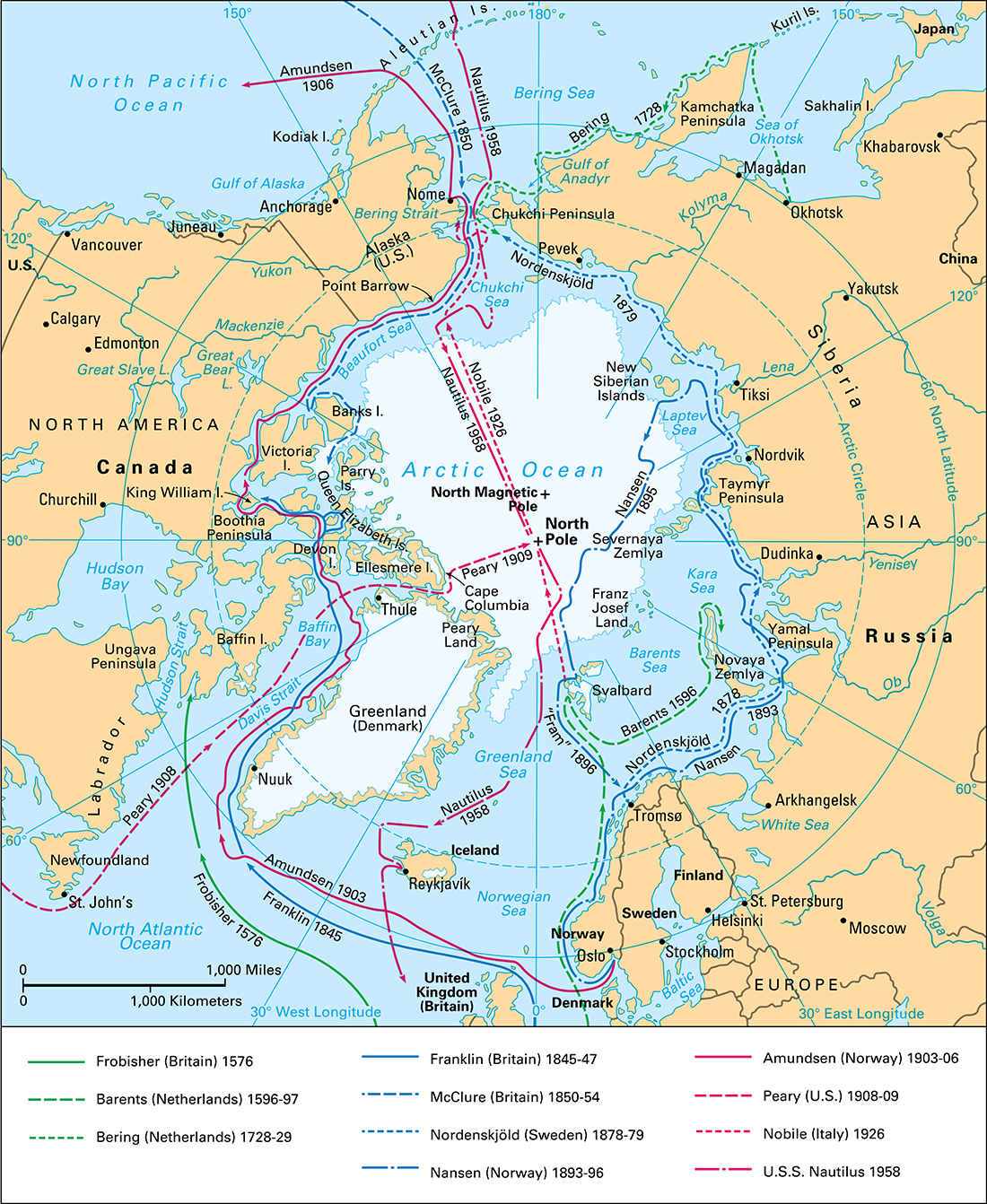Nansen, Fridtjof, << NAN suhn or NAHN suhn, FRIHT yof >> (1861-1930), was a famous Norwegian polar explorer. He was also a humanitarian (person devoted to others’ welfare), a statesman, a marine zoologist, and a pioneer oceanographer.
Nansen made his first Arctic cruise in 1882 as a zoological collector aboard a whaler. In the summer of 1888, he and five other men made the first east-to-west crossing of the huge ice sheet that covers Greenland, a feat experts had declared impossible.
Nansen hoped to obtain valuable scientific information by exploring the North Polar Basin. For this expedition, he had a ship built to withstand the grinding ice floes (sheets of floating ice). This ship was named the Fram (Forward). Nansen left Norway in the Fram on June 24, 1893. He deliberately let the ship become jammed in ice north of Siberia. For the next three years, the ice drift carried the ship across the Arctic Ocean to waters near Svalbard. In the second year, Nansen and Hjalmar Johansen left the Fram and tried to reach the North Pole with kayaks and sleds. They came within 272 miles (438 kilometers) of the pole, nearer than anyone before them. After meeting many dangers, they boarded a British ship at Franz Josef Land in 1896 and went to Norway.

Nansen played a prominent part in the separation of Norway from Sweden in 1905. From 1906 to 1908, he served as Norwegian minister to the United Kingdom. On his return to Norway, he became a professor at the University of Christiania. He went on ocean voyages in 1910, 1912, 1913, and 1914, and published his results in many books. His writings include Farthest North (1897) and In Northern Mists (1911), a history of Arctic exploration.
After World War I (1914-1918), Nansen was Norway’s delegate to the League of Nations. He aided Soviet refugees in Asia Minor (now part of Turkey) and directed the return of German and Soviet war prisoners to their homelands. He devised the Nansen passport—an identification certificate for refugees. He received the 1922 Nobel Peace Prize for his services. Oceanographers use a metal container, called a Nansen bottle in honor of him, to trap seawater. Nansen was born on Oct 10, 1861, in Christiania (now Oslo). He died on May 13, 1930.
See also Nansen International Office for Refugees .
